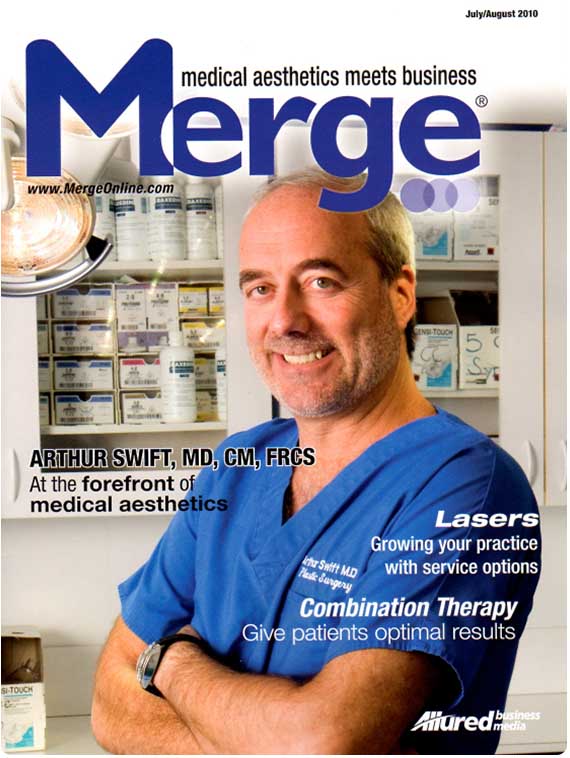Cash-Based Laser Aesthetic Services
Cash-Based Laser Aesthetic Services
By Louis Silberman

No matter what form of medicine you are involved in, chances are that health insurance affects your practice. And with the nation in a stir about health care reform, it is inevitable this influence will continue to grow. Seeing this trend, many medical professionals have started their own search for creative alternatives to one of their biggest problems; the cost of working with health insurance providers.
To combat it, a growing number of medical professionals are beginning to incorporate cash-based cosmetic laser aesthetic services into their practice. With few to no insurance issues and the ability to get assisting staff members trained to perform the procedures, many medical professionals can attest to the fact that they have been able to improve their bottom line and spend more time developing relationships with their patients through laser aesthetic services.
Marketing Medical Aesthetics
Developing a marketing strategy is a critical part of making laser aesthetic services a success in your practice. Unfortunately, this is often a difficult process for many physicians who are not used to actively reaching out to patients. Many have always waited for the patient to come to them, and, as a result, many simple leave a “We now offer…” brochure in the lobby and call it a day. This is a likely way to fail.
One of the most underutilized resources for exposure is the constant stream of patients sitting in the waiting room. Instead of leaving a stack of old magazines to read, engage this captive audience by installing a TV that plays a video loop displaying before-and-after images of each laser aesthetic service you offer. This often encourages patients to experience a procedure they didn’t even know they wanted. It is important to be proactive with your marketing, as well. Reach beyond the waiting room by sending a monthly e-mail newsletter to your patients informing them of various aesthetic services. Offer a discount on a highlighted treatment each month to help encourage people to try a laser treatment, and once you have spread the word amongst your patients, actively get in touch with them instead of waiting for them to come to you. While it may seem awkward at first, utilizing an employee whose full-time job is to book new and follow-up appointments is a proven strategy used by some of the most successful medical facilities.
ABSTRACT: The growing field of laser aesthetic treatments is a perfect fit for many medical aesthetic practices, as these services can offer highly sought-after skin and body care treatments at price points beneficial to both the patients and the practice.
Laser aesthetic service types:
While there is a long list of laser treatments on the market, there are certain requirements that must be met by a patient before receiving one. Ethnicity, hair color and skin type–often determined using the Fitzpatrick Scale–are all deciding factors when it comes to determining eligibility for a specific service, and this is why analyzing the demographics of your patients should be the first step you take before purchasing any equipment.
Laser hair removal. This modality uses selective photothermolysis, or heat produced by light, to target the melanin in hair follicles. The resulting follicle damage disrupts the growth cycle and permanently reduces the volume of hair regrowth.
• Average cost: $100-500, depending on the size of the treatment area
• Number of treatments: 6-10 for maximum results
• Treatment regularity: Every four to six weeks
•Who can receive this treatment: Skin types I-VI
•Income potential per patient: Up to $5,000
IPL Photofacial. An IPL Photofacial treatment delivers precise amounts of scattered light energy through the skin’s surface, targeting unwanted skin pigmentation and stimulating collages production. This softens the appearance of fine lines and wrinkles, lessens age spots and sun damage, and reduces skin redness associated with rosacea.
• Average cost: $300-500, depending on the size of the treatment area
• Number of treatments: Three to five for maximum results
• Treatment regularity: Every four weeks
• Who can receive this treatment: Skin types I-III
• Income potential per patient: Up to $2,500
Laser tattoo removal. Using a Q-switcher, heat is projected via laser beam into the tattoo ink trapped in the skin’s dermis. This process breaks up the ink particles and allows the body’s lymphatic system to absorb and disperse the color, fading and removing the tattoo through time.
• Average cost: $200-500, depending on the size of the treatment area
• Number of treatments: 12-15 for maximum results
• Treatment regularity: Every four weeks
• Who can receive this treatment: Skin types I-III
• Income potential per client: Up to $7,500
Fractional laser wrinkle reduction. This treatment takes a standard beam of laser light and splits it into thousands of microbeams. These microbeams are then projected into the epidermis and dermis, coagulating narrow columns of tissue while leaving the surrounding area unharmed. This process stimulates the body’s healing process, creating new collagen and healthy tissue.
A fraction laser treatment greatly reduces the appearance of wrinkles, treats dark hyperpigmentation associated with melasma, and aids in correcting the discoloration and uneven texture of scars caused by acne, surgery or other injuries.
• Average cost: $1,000-3,000, depending on the size of the treatment area.
• Number of treatments: Three to five for maximum results
• Treatment regularity: Every four weeks
• Who can receive this treatment: Skin types I-IV
• Income potential per client: Up to $15,000
Training
To ensure patient safety and maximize treatment effectiveness, didactic and clinical training is a must for anyone interested in offering advanced laser aesthetic services. The regulations determining the level of training needed to perform cosmetic laser treatments are organized at the state level. Unfortunately, the governmental agency determining these rules differs in each state.
And though it’s always best to contact your state’s governing board about this type of information, you can also learn about some of the latest legislation regarding laser usage in the medical aesthetic setting by logging on to www.MergeOnline.com/statelegislation.
Obtaining equipment
For many medical professionals, it is an easy decision to say yes to medical aesthetics and take advantage of the income potential a practice can receive from offering cash-based cosmetic laser services to patients. However, it’s not always as easy to navigate the cosmetic laser marketplace when looking for the perfect laser platform.
Renting a laser for a daily fee is a great way to test the waters. This method costs more per day, but offers the freedom of not requiring a long-term financial commitment. Financing a laser purchase with a bank loan is a second alternative. While offering direct ownership, the credit score requirements, interest and loan fees can sometimes make this option unavailable for some. But by far, the most popular method of bringing a cosmetic laser into a practice is through a leasing program. A cosmetic laser is a depreciating asset and, much like computers, they become outdated as medical aesthetic science continues to advance. A standard three-to-five-year laser lease costs less per month than a bank loan and can provide the option to trade in existing equipment for newer models as they become available.
The companies manufacturing medical laser equipment are becoming more and more numerous, and it’s not always easy to know where to look. Be sure to do your due diligence, researching and investigating any company you are considering doing business with, but for a list of some of the companies that produce cosmetic lasers, log on to www.MergeOnline.com/lasers.
Serving patients
No matter which services you decide to offer, what training you and your staff undergo, and what payment plan you decide on in order to obtain a laser for medical aesthetic services, it’s always wise to think of your patients first. What do they want? How would this decision benefit them? How does it benefit them? How does it benefit the growth of your practice and your patient list? Laser aesthetic services can be an incredible addition to your business, but you need patients who are interested in undergoing these services in order to make this investment work.
TAKE AWAYS
• Laser aesthetic treatments are a growing trend in the industry, helping physicians garner a profit while offering sought-after procedures.
• Marketing is imperative when purchasing cosmetic laser equipment.
• Videos, before-and-after images, brochures and e-mail newsletters can be beneficial marketing tactics.
• The necessary training for providing laser aesthetic services is paramount, as the best advertising can be good patient results.

Louis Silberman is president of National Laser Institute, a leading school specializing in advanced aesthetic laser and injectable treatment training for medical and non-medical professionals. For more information on medical aesthetics training call 1-800-982-6817 or simply fill out the form to your right.
|









